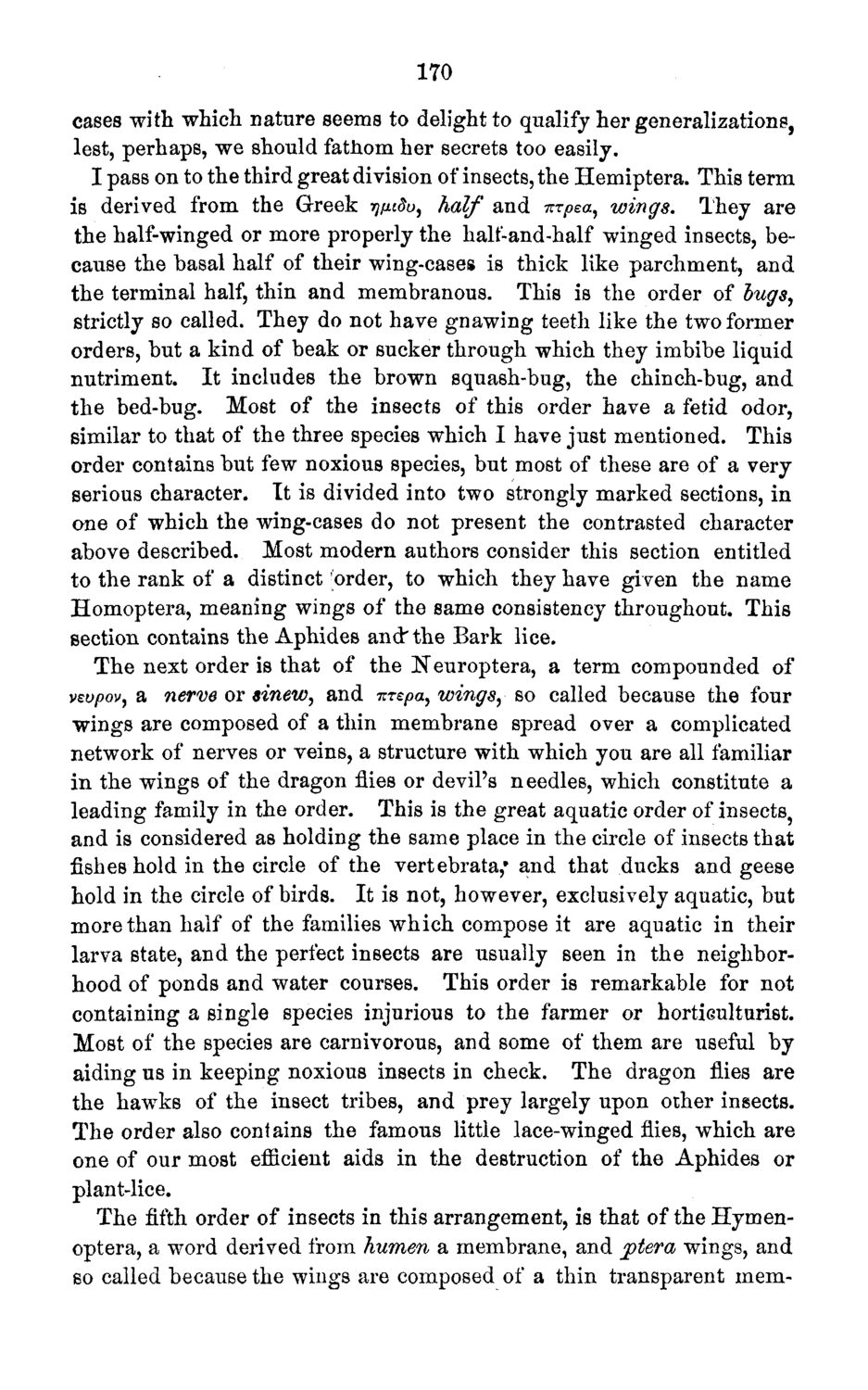| |
| |
Caption: Board of Trustees Minutes - 1871
This is a reduced-resolution page image for fast online browsing.

EXTRACTED TEXT FROM PAGE:
170 cases with which nature seems to delight to qualify her generalizations, lest, perhaps, we should fathom her secrets too easily. I pass on to the third great division of insects, the Hemiptera. This term is derived from the Greek yjfitdu, half and nrpea, wings. They are the half-winged or more properly the half-and-half winged insects, because the basal half of their wing-cases is thick like parchment, and the terminal half, thin and membranous. This is the order of bugs, strictly so called. They do not have gnawing teeth like the two former orders, but a kind of beak or sucker through which they imbibe liquid nutriment. It includes the brown squash-bug, the chinch-bug, and the bed-bug. Most of the insects of this order have a fetid odor, similar to that of the three species which I have just mentioned. This order contains but few noxious species, but most of these are of a very serious character. It is divided into two strongly marked sections, in one of which the wing-cases do not present the contrasted character above described. Most modern authors consider this section entitled to the rank of a distinct order, to which they have given the name Homoptera, meaning wings of the same consistency throughout. This section contains the Aphides an & the Bark lice. The next order is that of the Neuroptera, a term compounded of vewjt>ov,.a nerve or sinew, and nrepa, wings, so called because the four wings are composed of a thin membrane spread over a complicated network of nerves or veins, a structure with which you are all familiar in the wings of the dragon flies or devil's needles, which constitute a leading family in the order. This is the great aquatic order of insects, and is considered as holding the same place in the circle of insects that fishes hold in the circle of the vertebrata,* and that ducks and geese hold in the circle of birds. It is not, however, exclusively aquatic, but more than half of the families which compose it are aquatic in their larva state, and the perfect insects are usually seen in the neighborhood of ponds and water courses. This order is remarkable for not containing a single species injurious to the farmer or horticulturist. Most of the species are carnivorous, and some of them are useful by aiding us in keeping noxious insects in check. The dragon flies are the hawks of the insect tribes, and prey largely upon other insects. The order also contains the famous little lace-winged flies, which are one of our most efficient aids in the destruction of the Aphides or plant-lice. The fifth order of insects in this arrangement, is that of the Hymenoptera, a word derived from humen a membrane, and jptera wings, and so called because the wings are composed of a thin transparent mem-
| |